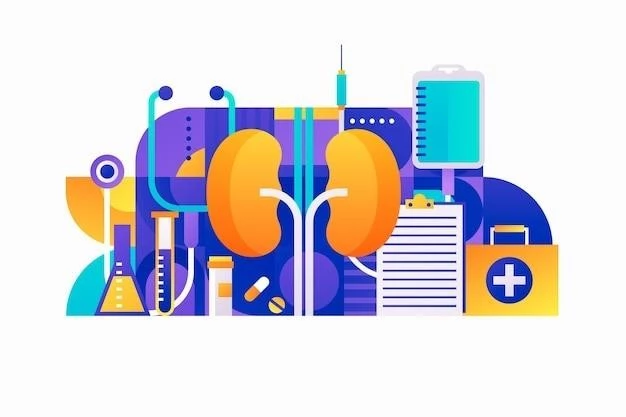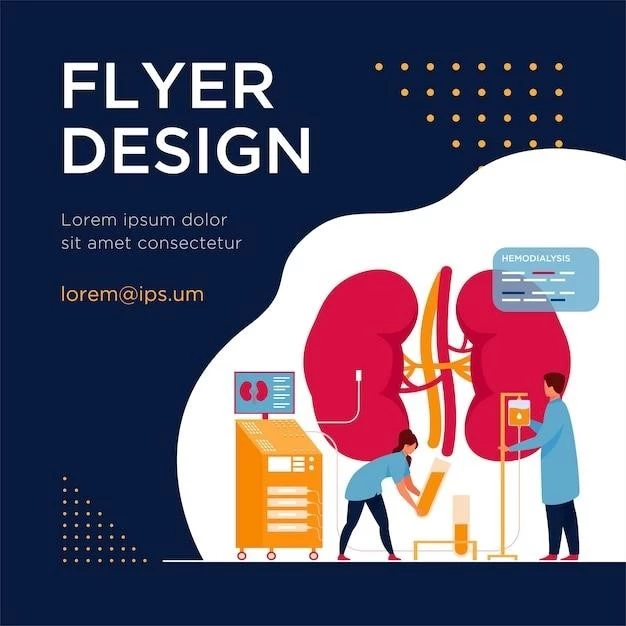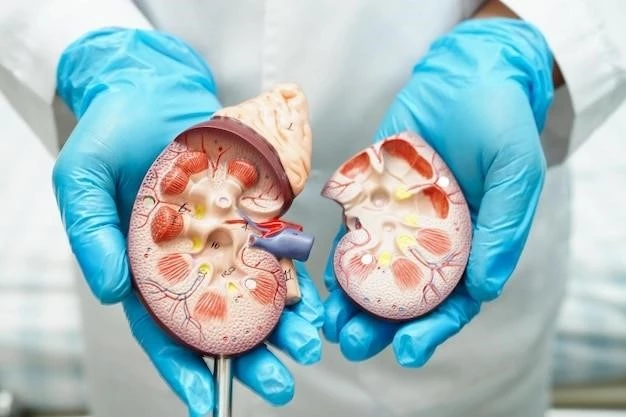Article Plan⁚ Disease ౼ Renal Agenesis, Bilateral
Definition and Overview
Disease Overview. Bilateral Renal Agenesis is the absence of both kidneys at birth. It is a genetic disorder characterized by a failure of the kidneys to develop in a fetus. Due to this absence, there is a deficiency of amniotic fluid (Oligohydramnios), impacting the overall development of the fetus. This condition, also known as Potter syndrome, is considered universally fatal as it leads to severe respiratory insufficiency at birth. The lack of amniotic fluid results in pulmonary hypoplasia, making it incompatible with life post-birth; Bilateral Renal Agenesis is a rare condition, occurring in about 1 in 3,000 to 4,500 live births.
Incidence and Prevalence
Bilateral Renal Agenesis is a rare condition with an incidence of approximately 1 in 3,000 to 4,500 live births. This means that in a significant number of cases, both kidneys fail to develop during gestation, leading to this life-limiting condition. Despite its rarity, the absence of both kidneys is considered incompatible with life due to the impact on the formation of amniotic fluid and subsequent respiratory complications at birth.
Causes of Bilateral Renal Agenesis
Bilateral Renal Agenesis occurs when the ureteric bud fails to fuse with the metanephric blastema during embryonic development, resulting in the absence of both kidneys. This condition, which may be unilateral or bilateral, is usually linked to genetic factors and mutations. While the exact cause of this developmental abnormality is not always clear, it is often associated with disruptions in the normal kidney formation process during gestation. Mutations in genes such as GREB1L٫ RET٫ or UPK3A have been implicated in the pathogenesis of Renal Agenesis٫ contributing to the failure of kidney development.
Genetic Factors and Mutations
Genetic factors and mutations play a crucial role in the development of Bilateral Renal Agenesis. The condition is often associated with abnormalities in genes such as GREB1L, RET, or UPK3A, which are vital for normal kidney formation during embryonic growth. Mutations in these genes can disrupt the intricate process of kidney development, leading to the absence of one or both kidneys at birth. Understanding these genetic factors is essential in diagnosing and managing Bilateral Renal Agenesis.
Diagnosis of Bilateral Renal Agenesis
The diagnosis of Bilateral Renal Agenesis is often confirmed through prenatal ultrasound scans between 18 and 22 weeks of pregnancy. During routine screenings٫ the absence of both kidneys and ureters can be identified٫ leading to suspicions of this life-limiting condition. Additional tests such as magnetic resonance imaging (MRI) may be recommended to further confirm the diagnosis and assess the extent of the condition. Bilateral Renal Agenesis٫ also known as Potter syndrome٫ is considered incompatible with extrauterine life٫ emphasizing the importance of accurate prenatal diagnosis.
Symptoms and Complications
Bilateral Renal Agenesis presents a range of symptoms and complications due to the absence of both kidneys at birth. The condition, also known as Potter syndrome, leads to severe respiratory insufficiency at birth, resulting from pulmonary hypoplasia caused by the deficiency of amniotic fluid. The absence of kidneys impacts the overall development of the fetus and poses significant challenges postnatally. Complications can include oligohydramnios, skeletal deformities, and characteristic facial features associated with Potter syndrome.
Effects on Pregnancy
Bilateral Renal Agenesis can have profound effects on pregnancy. As the condition leads to the absence of both kidneys in the fetus, the lack of amniotic fluid poses significant challenges for the developing unborn child. This deficiency of amniotic fluid (Oligohydramnios) affects the cushioning and protection of the fetus, impacting its growth and development. The severe respiratory insufficiency associated with Bilateral Renal Agenesis can also have implications for the pregnancy and delivery process, requiring specialized care and management.
Prenatal Ultrasound and Diagnosis
Bilateral Renal Agenesis is usually detected between 18 and 22 weeks of pregnancy through routine prenatal ultrasounds. When physicians observe the absence of both kidneys and ureters, further diagnostic procedures like magnetic resonance imaging (MRI) may be recommended to confirm the diagnosis. Early and accurate prenatal diagnosis of Bilateral Renal Agenesis is crucial for providing appropriate medical care and counseling to families affected by this rare and life-limiting condition.
Management and Treatment Options
When dealing with Bilateral Renal Agenesis, management and treatment options are challenging due to the life-limiting nature of the condition. Since this genetic disorder results in the absence of both kidneys, treatment focuses on supportive care for the affected fetus and families. While there is currently no cure for babies with Bilateral Renal Agenesis, interventions may include specialized obstetric care to monitor the pregnancy and provide support for the family during this difficult time.
Challenges in Treating Bilateral Renal Agenesis
Managing Bilateral Renal Agenesis poses significant challenges due to the absence of both kidneys, which is incompatible with life postnatally. The condition, historically considered universally fatal, leads to severe respiratory insufficiency at birth due to pulmonary hypoplasia resulting from the absence of amniotic fluid. While prenatal diagnosis allows for early detection, the lack of viable treatment options emphasizes the complexities involved in caring for infants affected by Bilateral Renal Agenesis.
Research and Advancements
Ongoing research into Bilateral Renal Agenesis focuses on understanding the genetic mutations and factors contributing to the condition. Advancements in genetic testing and prenatal screening methods aim to improve early detection and provide more accurate prognoses for affected pregnancies. Additionally, studies explore the potential for novel treatments or interventions that could address the challenges associated with this rare and life-limiting disorder. Research efforts also focus on offering support to families affected by Bilateral Renal Agenesis and raising awareness about the condition.
Prognosis and Outcomes

The prognosis for individuals with Bilateral Renal Agenesis is generally poor, as the absence of both kidneys at birth leads to severe respiratory complications and pulmonary hypoplasia, making the condition incompatible with life after birth. While advances in medical technology and prenatal diagnosis have improved the early detection of this condition, the outcomes remain challenging, with limited treatment options available. The rarity of Bilateral Renal Agenesis underscores the critical need for ongoing research and support for affected families.
Support and Care for Families
When dealing with Bilateral Renal Agenesis, families often require specialized support and care to navigate the challenges associated with this rare condition. Given the life-limiting nature of the disorder, medical professionals and support groups play a vital role in providing emotional, psychological, and practical assistance to affected families. Counseling, access to resources, and guidance in decision-making processes can help families cope with the complexities of managing a pregnancy or newborn diagnosed with Bilateral Renal Agenesis. It is crucial to offer comprehensive support to families facing the impact of this condition on both the unborn child and the family unit as a whole.

Conclusion and Future Directions
In conclusion, Bilateral Renal Agenesis poses significant challenges due to the absence of both kidneys at birth, leading to severe respiratory complications and pulmonary hypoplasia. While research and advancements have improved early detection and understanding of genetic factors, the prognosis remains poor with limited treatment options. Moving forward, efforts should focus on advancing genetic testing, prenatal screening methods, and exploring potential treatments to address the complexities of this rare and life-limiting disorder. Support and care for families affected by Bilateral Renal Agenesis are essential, emphasizing the need for comprehensive medical and emotional assistance in managing this challenging condition.
